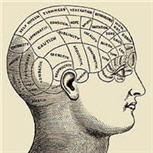Big Ideas Instead of Ads!
HEY! What’s the Big Idea?
These are on-the-fly notes from the Consumer Engagement Conference; Panel Discussion on ‘Big Ideas Instead of Ads’: Valerie Graves of Vigilante, Mike Hughes of The Martin Agency, Andrew Keller of Crispin, Porter and Bogusky, Joyce King Thomas of McCann Erickson and Mark Tutssel of Leo Burnett, led by Randall Rothenberg of Booz Allen Hamilton:
Myth vs. Science - Which of the two provide for a Big Idea? Is it a combination of both? Does one have more impact over the other? The general consensus appeared to be that science plays a major role in coming up with a big idea, but advertising can not be turned into a science. Words like insight, self-expression, logic and creativity came up quite a bit, as did reward, intrigue, interest and inspire. What can really stimulate consumer engagement is offering them something that is inspiring, something that is intriguing, and in the end something that rewards them. Let’s be honest, everyone likes to be rewarded. If you offer me a product or service that I can benefit from, I will definitely think about this product even after I turn off the television set. I may even go out and purchase this product and maybe, just maybe, I’ll tell my friend about it. This is the key. To get people interested. Get people talking about your brand. Seems simple doesn’t it? The hard part is coming up with a campaign that will grasp the immediate attention of consumers and then executing it in a way that will keep them interested. Creativity plays a key role here as does bridging the gap between a product and the audience it’s trying to reach.
I think it’s safe to say that the key to a successful campaign for a particular brand is one that engages consumers. Determining how to take a product and make it appeal to consumers is crucial to giving them a reason to engage – a reason to remember – a reason to purchase. But what is interesting to a consumer? Almost anything can engage a consumer as long as the appeal is right.
Examples:
Geico Car Insurance – Surprising how engaged consumers were by the British speaking Getco.
Staples Easy Button – A simple concept grounded on the idea that life needs to be simple resonated with people. Nearly 1 million easy buttons were sold.
Burger King – Created a King who is believed to be a classic character of advertising that appealed to children and re-contextualized to a scary setting.
So what’s the moral of the story? You, the advertiser, must understand the consumer you are trying to reach and you must be interesting. If you provide an interesting message, you will find an interested, engaged consumer.
These are on-the-fly notes from the Consumer Engagement Conference; Panel Discussion on ‘Big Ideas Instead of Ads’: Valerie Graves of Vigilante, Mike Hughes of The Martin Agency, Andrew Keller of Crispin, Porter and Bogusky, Joyce King Thomas of McCann Erickson and Mark Tutssel of Leo Burnett, led by Randall Rothenberg of Booz Allen Hamilton:
Myth vs. Science - Which of the two provide for a Big Idea? Is it a combination of both? Does one have more impact over the other? The general consensus appeared to be that science plays a major role in coming up with a big idea, but advertising can not be turned into a science. Words like insight, self-expression, logic and creativity came up quite a bit, as did reward, intrigue, interest and inspire. What can really stimulate consumer engagement is offering them something that is inspiring, something that is intriguing, and in the end something that rewards them. Let’s be honest, everyone likes to be rewarded. If you offer me a product or service that I can benefit from, I will definitely think about this product even after I turn off the television set. I may even go out and purchase this product and maybe, just maybe, I’ll tell my friend about it. This is the key. To get people interested. Get people talking about your brand. Seems simple doesn’t it? The hard part is coming up with a campaign that will grasp the immediate attention of consumers and then executing it in a way that will keep them interested. Creativity plays a key role here as does bridging the gap between a product and the audience it’s trying to reach.
I think it’s safe to say that the key to a successful campaign for a particular brand is one that engages consumers. Determining how to take a product and make it appeal to consumers is crucial to giving them a reason to engage – a reason to remember – a reason to purchase. But what is interesting to a consumer? Almost anything can engage a consumer as long as the appeal is right.
Examples:
Geico Car Insurance – Surprising how engaged consumers were by the British speaking Getco.
Staples Easy Button – A simple concept grounded on the idea that life needs to be simple resonated with people. Nearly 1 million easy buttons were sold.
Burger King – Created a King who is believed to be a classic character of advertising that appealed to children and re-contextualized to a scary setting.
So what’s the moral of the story? You, the advertiser, must understand the consumer you are trying to reach and you must be interesting. If you provide an interesting message, you will find an interested, engaged consumer.

0 Comments:
Post a Comment
<< Home